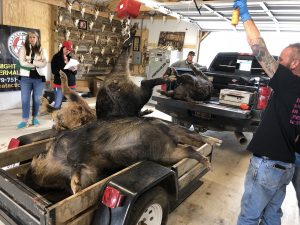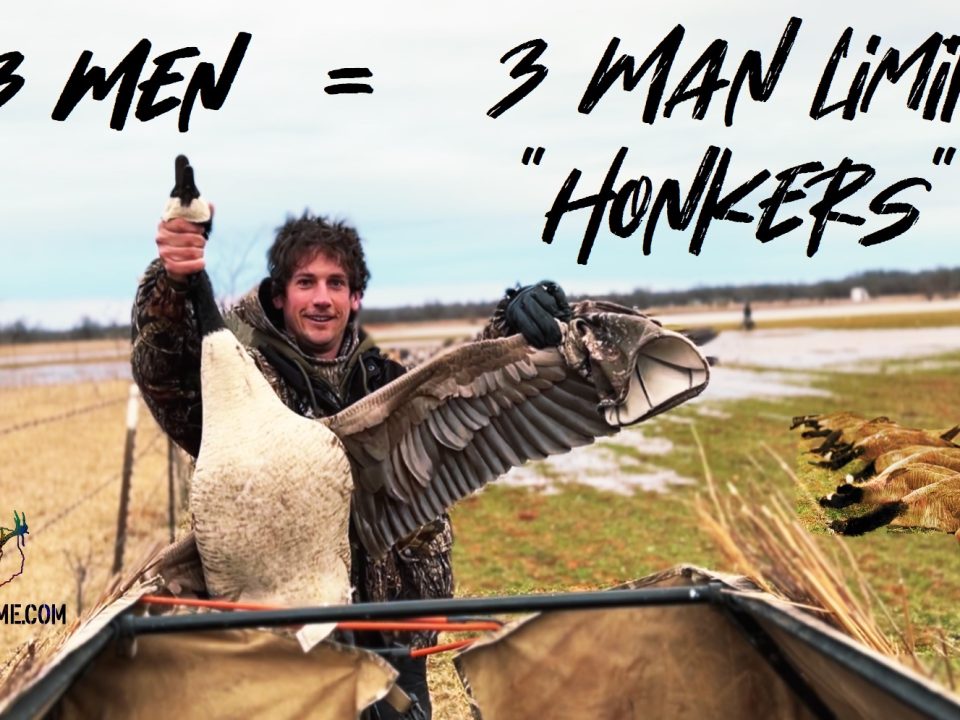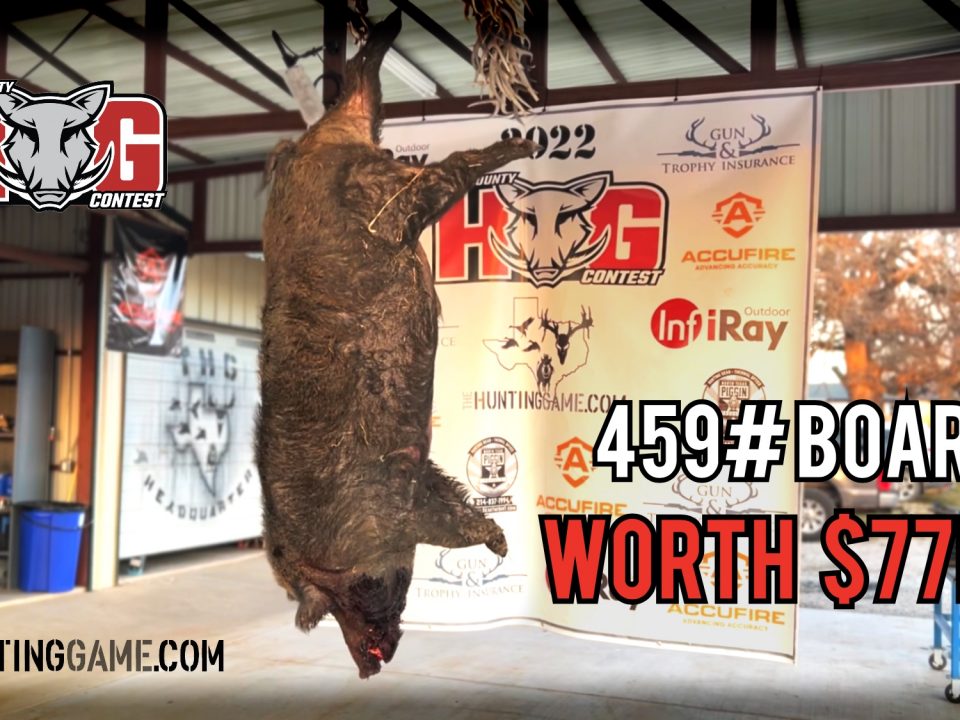
HOG HUNT – Wise County Hog Hunt puts a small dent in the millions of feral hogs found in Texas. Submitted photo
Feral population grows along with incidents
By Christian McPhate | Published on November 30, 2019
HOG HUNT – Wise County Hog Hunt puts a small dent in the millions of feral hogs found in Texas. Submitted photo
The feral hogs attacked the 59-year-old caretaker at dawn near the Texas Gulf Coast. It was early Sunday in late November, and she’d just parked and was on her way to the 84-year-old patient’s house when multiple feral hogs tore into her.
She was found between her car and the front door with different size bites and a severe head wound. Jefferson County coroner ruled Monday that she had bled to death.
“In my 35 years, it was one of the worst things I had ever seen,” said the Chambers County Sheriff Brian Hawthorne in a Monday press conference.
The death put emphasis on the growing problem with feral hogs across Texas, including in Wise County. While the number of fatalities involving hog attacks is relatively low, the damage feral hogs cause reaches more than $1.5 billion annually, said Wise County Game Warden David Pellizzari.
In this area, Pellizzari said the one fatality directly related to hog hunting occurred when a hunter fell out of his stand and accidentally shot himself.
“Most accidents are related to poor firearm management, where they shoot themselves or their buddies,” he said.
But the feral hog problem has gotten so bad that Pellizzari claimed Texas Parks and Wildlife has spent a lot of money running different tests over the years to come up with a chemical delivery method to kill them.
It’s a tall order to fill because feral hogs reproduce so quickly – usually 42 days after dropping a litter – and at such a young age. Pellizzari wasn’t sure about the exact number of feral hogs in Texas, but said he believes it’s in the millions.
It’s unclear when feral hogs first became a problem in Texas. Pellizzari said they think some game ranches and hunting operations in the 1930s brought over some Russian boars, which then escaped and crossbred with domestic pigs.
Over the last 10 or 15 years, the feral hog population has exploded.
“Nobody has come up with a method to get rid of them,” he said.
Some people try trapping them and selling them to hog markets overseas. Pellizzari said the wild hog meat is more lean than a farm-fed hog, but it has to be cooked correctly due to the diseases and parasites feral hogs carry.
But hunting is the only effective method at this point, Pellizzari claimed.
Wise County has one of the largest feral hog hunt contests in the nation. Decatur resident Trey Hawkins manages the month-long contest for his website TheHuntingGame.com. This is his ninth year to host it, and it covers not just Wise County but all of Texas and Oklahoma.
Last year, 179 hunting teams paid the $200 entry fee to hunt feral hogs. First place collected nearly $18,000, followed by $11,000 for second place.
Hawkins said most hunters will use rifles from the AR platform because it requires less frequent reloading, and every rural Texan knows that whenever you see one feral hog, there are always more that follow.
“It’s why rattlesnakes never rattle anymore because the hogs will stop and eat it,” Hawkins said.
Even with nearly 200 teams signing up to participate in the contest, they only end up killing between 500 to 1,000 feral hogs, and they’re quickly replaced by the next hunting season due to the frequency of hog breeding.
Hawkins isn’t the only one hosting feral hog hunting contests. The Waggoner Ranch in Wichita Falls hosts an annual helicopter hog hunt, killing 8,000 to 10,000 feral hogs, according to Pellizzari.
“It doesn’t make a dent in the population,” he said.
Pellizzari also indicated residential growth in their territory is also causing more feral hog and human interaction. He said a couple of years ago, feral hogs chased a lady around the Walmart parking lot in Stephenville.
But he stressed that most feral hogs won’t just attack you unless they are cornered, injured or protecting their young.
“The problem is there is always going to be babies mixed in (with the herd),” Pellizzari said. “The best thing to do is give them their space.”




